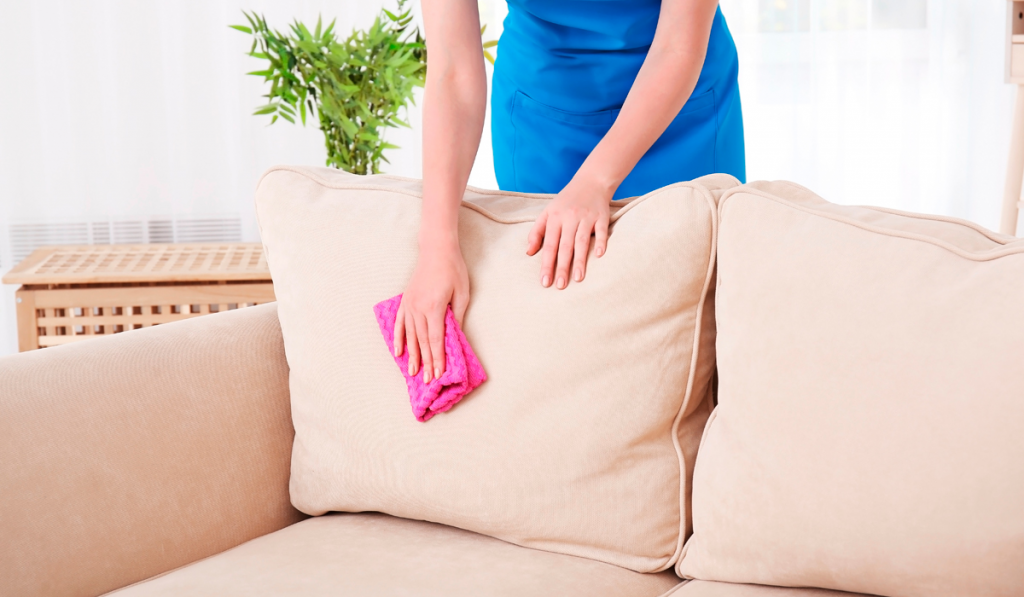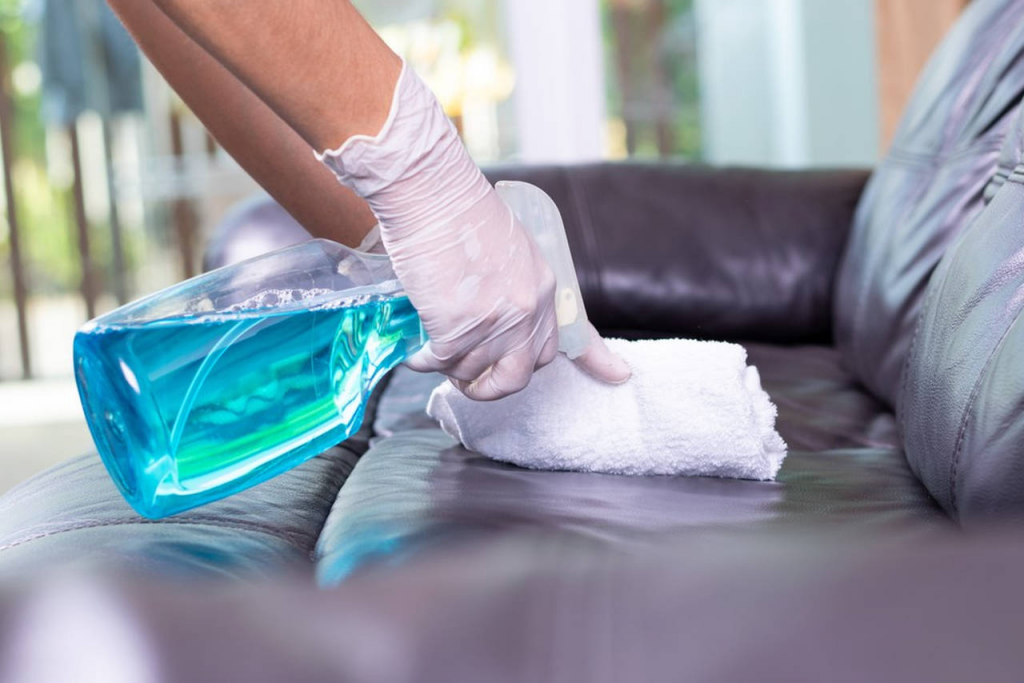Leather sofas are a symbol of elegance and comfort in any living space. Yet, these valuable pieces of furniture require a bit of extra care to keep them looking new and to ensure they last for many years. Protecting your leather sofa isn’t just about enhancing its appearance; it’s also about preserving the quality of the material. With the proper steps – from using the right leather conditioners to employing protective covers – you can maintain your sofa’s pristine condition. This article reveals the main topic of safeguarding your leather couches and provides a detailed approach to doing so effectively.
Understanding Your Leather Sofa
Leather furniture requires different care depending on its type. Full grain leather, known for its durability and natural appearance, might have unique maintenance needs compared to more processed leathers like bonded leather. Different types of leather not only determines durability but also how the furniture will last over time and the specific care products you should use. Ensuring you know the type of leather your sofa is made of will help you in choosing the correct cleaning and protecting methods.
Types of Leather and Their Care Requirements
Here is a breakdown of common leather types used in couches and their varying needs:
- Full Grain Leather – The most durable and highest quality, retaining the natural markings but requires keen maintenance.
- Top Grain Leather – More refined than full grain, smoother and easier to clean, but still needs regular care.
- Split Leather – Softer and more flexible, yet more susceptible to scratches and might need more frequent conditioning.
- Bonded Leather – Made from leftover scraps, less durable, and often requires special cleaners to prevent causing damage.

The Essentials of Leather Conditioning
Using the right leather conditioners can make a significant difference in preventing cracks and keeping the leather supple. Not only does conditioning help protect the leather from drying out, but it also provides nourishment to preserve its natural oils, which is crucial for genuine leather’s longevity. Regular conditioning, done every six to twelve months depending on the leather’s exposure to wear and environmental factors, helps prevent the material from deteriorating.
Why Conditioning is Crucial
Conditioners are specially formulated to penetrate the leather, hydrating it from within, which prevents cracking and keeps the surface soft and flexible. A good quality conditioner not only keeps your couch feeling plush but also helps in preventing scratches and other damaging elements from leaving a mark.
The table below outlines the best practices for applying leather conditioner:
| Step | Action | Tips |
|---|---|---|
| 1 | Clean the sofa | Use a specialized cleaner to remove dirt and oils. |
| 2 | Apply conditioner | Use a soft cloth and rub conditioner in a circular motion. |
| 3 | Buff | Gently buff the leather to a shine and do not leave excess conditioner on the surface. |
Day-to-Day Leather Sofa Maintenance
Day-to-day maintenance is the first step in extending the life of your sofa. Regular cleaning not only prevents dirt and grime build-up but also keeps an eye out for the early signs of wear. Ensuring that spills are dealt with immediately and the leather is kept free of dust and debris goes a long way in maintaining its look and feel.
The Basics of Everyday Care
Dusting and gently wiping your leather furniture regularly helps keep it free from dust and spills that could harden over time and cause damage. Here’s a basic maintenance checklist for daily care:
- Using a soft brush attachment, gently vacuum any dust and debris from the sofa’s surfaces, including crevices and cushions.
- Wipe down the leather with a soft, dry cloth to remove any remaining dust.
- If spills occur, immediately soak up the excess with a white cloth and then gently wipe the area with a damp cloth.

Preventing Scratches and Scuffs
Whether it’s from pets, children’s toys, or just daily wear and tear, scratches and scuffs could easily mar the surface of your leather sofa. Good habits, such as not allowing pets on the furniture or using throws, can help protect the sofa from potential damage. Additionally, using fabric protectors could help shield the surface from unforeseen accidents.
Human and Pet-Related Considerations
Preventing scratches is as much about behavior as it is about protection. Training pets not to climb, ensuring toys and sharp objects are kept away, and avoiding wearing clothing with protruding elements that could scratch the leather all contribute to keeping your sofa in pristine condition. Should a scratch occur, a quality leather repair kit can help restore the look of your sofa.
Protective Covers and Other Preventive Measures
Couch covers could also play a vital role in protecting your leather furniture. They not only help keep the leather clean but also protect it from sunlight and spills. When choosing covers, make sure they complement your home’s décor while also providing the necessary protection for your sofa.
Environmental Factors and How to Mitigate Them
Understanding what could harm your furniture is key in prevention. For leather, direct sunlight and heat can cause fading and dry out the material, leading to cracks.

Conclusion
Leather can dry out over time, leading to cracks and stiffness. Conditioning your leather sofa with a high-quality leather conditioner helps to keep it moisturized and supple. Apply the conditioner according to the manufacturer’s instructions, and buff the leather with a clean cloth to restore its shine.
Direct sunlight can fade and damage leather over time. Place your leather sofa away from windows or use curtains or blinds to block out UV rays. If your sofa is exposed to sunlight, consider using a UV protectant spray to shield the leather from harmful rays.
Prevention is key when it comes to spills and stains on your leather sofa. Place coasters under glasses and avoid eating or drinking on the sofa to minimize the risk of accidents. If a spill does occur, blot it immediately with a clean cloth to prevent the liquid from soaking into the leather.
Finally, make sure to perform regular maintenance on your leather sofa to address any minor issues before they become major problems. Check for signs of wear and tear, such as scratches or tears, and address them promptly with leather repair kits or professional help if needed.
By following these tips and incorporating them into your regular cleaning routine, you can protect your leather sofa and enjoy its beauty and comfort for years to come.
FAQ
1. How often should I clean my leather sofa?
It’s recommended to clean your leather sofa at least once every three months to remove dirt, dust, and oils that can accumulate over time.
2. Can I use any cleaner on my leather sofa?
No, it’s important to use a cleaner specifically designed for leather furniture. Harsh chemicals or abrasive cleaners can damage the leather, so always opt for a mild leather cleaner.
3. How do I prevent my leather sofa from fading?
To prevent fading, avoid placing your leather sofa in direct sunlight. Use curtains or blinds to block out UV rays, and consider applying a UV protectant spray for added protection.
4. What should I do if my leather sofa gets a spill?
If a spill occurs, blot it immediately with a clean cloth to absorb the liquid. Avoid rubbing, as this can spread the stain. Once the spill is blotted, use a leather cleaner to remove any remaining residue.
5. How can I address scratches or minor damage on my leather sofa?
For minor scratches or damage, you can use a leather repair kit to touch up the affected area. Follow the instructions carefully and buff the repaired area with a clean cloth to blend it with the surrounding leather.